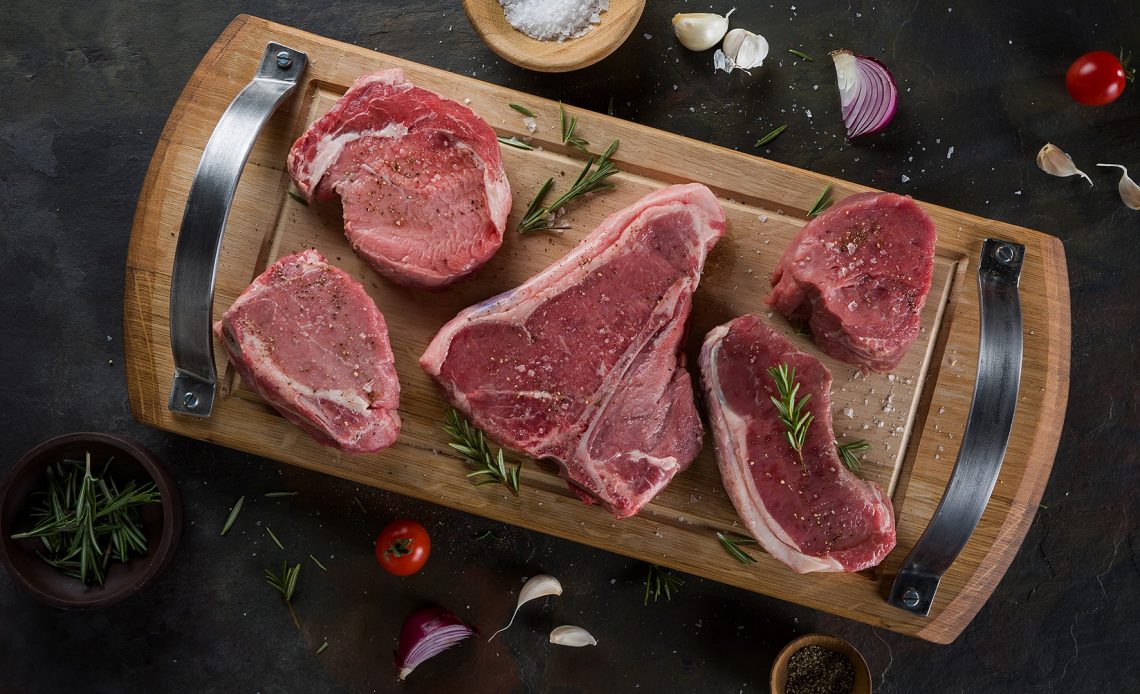This is custom heading element
The Hussar Grill, situated at Montecasino, Johannesburg, is famous for its steak and wine pairing menu. We were invited to a special pairing event which left me tipsy, but enlightened.
While all grapes come from the common grape vine, Vitis vinifera, every grape varietal (or cultivar) bears distinct leaves and grapes. The wines these make therefore release different aromas and flavours specific to that cultivar.
The same can be said for steak. Each cut is different and comes from a different part of the animal, with a different flavour and density.
Red wine is considered a better match for red meat because of its high tannin content, which gives it the astringency to help penetrate fat. The general rule is to match the intensity of the dish with the wine. However, the Hussar Grill is firmly of the view that you should enjoy meat and wine just the way you like it.

We were served an exquisite fillet, a cut considered the premium one for tenderness. Fillet is best served rare or medium-rare, as it’s lean and will dry out if cooked too long. We ate it paired with Pinot Noir – a match made in heaven.
Next, we had rump steak paired with Merlot – which, according to our waiter, Walter – is the ideal “in-betweener”, an easy-drinking, smooth option. “This medium-bodied red wine matches the rump, as it’s equally flavourful and soft,” he explained.



I was more excited to taste the sirloin, which was paired with Shiraz. This bold red wine complements the steak, thanks to its high tannin count, which acts as a palate-cleansing astringent with this fattier cut of beef.
Rib eye is fatty, with more marbling, and was paired with Cabernet Sauvignon. This king of red wines is full-bodied, with robust, fruity notes that can stand up to the richness of the meat. The tannins derived from the red skin of the grape combine with a high alcohol level, making the wine taste smoother and less bitter, and the steak more flavourful. The more marbling the meat has, the longer the cooking time. If a rib eye is served medium, the cooking process melts the fat and the caramelisation process brings out the meat’s juiciness and taste.
Also on the Hussar Grill’s menu is fillet on the bone and sirloin on the bone, both paired with a red blend. Besides pairing well together and each having a variety of flavour profiles, red wine and steak share interesting similarities in the way they’re aged and stored. If a wine is made to age, the ageing process helps further develop flavours and textures we’d otherwise never enjoy. With ageing, the tannins soften and flavours develop secondary and tertiary aromas are released. This distinguishes wine from most other consumable goods – except steak. At the Hussar Grill, steak is also always aged, which breaks down its connective tissue and makes it more tender. In general, the older the meat, the darker and richer it becomes – just like wine.
Wine, of course, needs to be stored very carefully in optimum temperatures (7-8ºC) in order to age well. It should be kept in a cellar or dark space, in corked bottles lying on their side. It should never be exposed to oxygen (once it is, it must be drunk) or too much light. Steak needs to be hung in order to age well, in a contained, sterile environment where it isn’t exposed to pungent aromas or smoke that could influence its flavour.
The Hussar Grill has certainly mastered all these requirements – as its delicious offerings attest.


